We’re shifting into the New Year… 2017! That means, you probably have some New Year’s Resolutions and health goals or perhaps you need to recover from the holidays. Exercise is probably on your list. Or, at least I hope it is! When you exercise the right way, it can help you have a healthy glow, drop excess weight, and improve your energy, sleep and overall health. We know exercise is great for your skin too.
So, I invited my guest today, Debra Atkinson to talk about how to efficiently and effectively exercise, and how to fit it into your schedule in a way I think you’ll love! Debra Atkinson is Flipping 50 Wellness Coach and a fitness expert and author. She has 32 years fitness industry experience and is an International fitness presenter. Her primary focus is helping women approaching 50 or who’ve turned the corner on 50 to have more vitality and energy. Debra is host of the Flipping 50 TV show and the Flipping 50 podcast as well as a frequent blogger at Huffington Post, ShareCare, and other media channels. She is the author of You Still Got It, Girl: The After 50 Fitness Formula for Women, and Navigating Fitness After 50: Your GPS For Choosing Programs and Professionals You Can Trust.
On today’s podcast, she shares some great tips on how to achieve your new year’s resolutions and build an efficient workout routine that helps you achieve the results you’re looking for.
So please enjoy this interview…
To learn more about Debra Atkinson, visit her website here.
I invite you to join the The Spa Dr. community on my website or subscribe to the podcast on iTunes so you don’t miss our upcoming shows. If you have not done so already, I highly recommend that you get your customized Skin profile here. It’s free and based upon your answers, it will give you great tips for glowing skin and vibrant health.
Thank you and we’ll see you next time.
TRANSCRIPTION
| Trevor: | Hi there. I’m Dr. Trevor Cates. Welcome to the Spa Dr. Podcast. We’re shifting into the New Year, 2017. Can you believe it’s already here? That means you probably have some New Years resolutions, some health goals, or you just need to rebound from the holidays and recover from all the excess and the eating and the partying. Whatever it’s been, it’s time for the New Year. It’s a new you, New Year, and exercise is probably on your list. At least I hope it is, because when you exercise the right way it can help you have a healthy glow not to mention drop that excess weight you don’t need, improve your energy, your sleep, and your overall health. We know that exercise is so great for your skin. |
| I invited my guest today to talk about how to efficiently and effectively exercise in way you could fit it in in a way that works for you. I know we all have 10 or 20 minutes, right? We’re going to talk today about how you can fit in a really great exercise routine in the time that you have. To accommodate for your schedule, because I want to set you up for success for 2017. | |
| My guest is Flipping 50 wellness coach and fitness expert Debra Atkinson. She has 32 years fitness experience in the industry and is an international fitness presenter. Her primary focus is helping women approaching 50 or who’ve already turned 50 to have more vitality and energy, but what we’re talking about today is great for everybody. That’s been her big focus, and you’ll see why in her interview. She’s the host of Flipping 50 TV show and the Flipping 50 podcast as well as being a frequent blogger at the Huffington Post, Sharecare, and other media channels. On today’s podcast, she shares some great tips on how to achieve your New Years resolutions, those exercise goals that you have, and build in an efficient workout routine that gets you the results you’re looking for and that kind of cheat your body into getting into an exercise routine that you’ll enjoy and be able to follow through with and get that the results that you’re looking for. Please enjoy this interview. | |
| Debra, it’s so great to have you on my show. | |
| Debra: | I’m so excited to be here. |
| Trevor: | I know that you’ve got a personal story that ties into why you focus on exercise for women 50 and over. Tell us about that. |
| Debra: | I’ve been in fitness for 32 years. I’ve taught in church basements and on stages at university buildings and did it all before it was really popular and mainstream. I have always been an old soul. I was raised by older parents and raised with older siblings, so I was always, even as a 20 year old, gravitating toward the older adults. I was given them because I got them a little bit better. Loved working with them, and really honestly thought I was pretty good at my job until about 49. I decided I need more. I think we all identify with, “There’s more. I’m just not doing it, and if I stay here I’m gonna settle and I’m gonna just be comfortable.” I wanted to do a little bit more giving, leaving a legacy. |
| I decided, “I’m leaving corporate. I’m leaving safety, security, and all the little perks that come with it,” started a business, and really dove into females approaching 50, going through hormone chaos, when suddenly the rules feel like they’ve changed and nobody told you. You’re looking at things you didn’t see in the mirror yesterday, and your waistband doesn’t feel like it did yesterday. You think you’re doing everything right, and it’s not text book anymore. | |
| That’s why I did what I did. Little did I know, working for yourself, the boss is, let me just say, she’s a bitch. The hours are not nearly as good. I really went through a lot of crises. I went through a lot of change in my life. About eight major life changes in about 14 months. Not what you’d recommend at any age, but when your hormones are also changing, it was that that made me get my customer even better. I literally was living it, and realized the exciting thing was I had been someone who loved marathons, loved triathlons, so lots of long endurance training, but suddenly couldn’t pull myself away from work because I was really driven to get something done. 20 minutes a day was all I was doing, and realized after a year of doing that I actually was the same weight, same body composition, felt better than I had. | |
| It dawned on me that I just swapped hours, sometimes during the same day, of exercise for what might be 20 minutes. Sometimes more, but it was always a balance of 20 minutes of cardio and maybe 20 minutes of weights. So much less and feeling so much better that I knew that wasn’t an accident. Really wanted to put that word out there and share it with a lot of people who are beating themselves up thinking, “I’m not exercising enough or getting results.” We can let go of some of that. I want to put women on the right path and help them avoid mistakes I’ve made in the past. | |
| Trevor: | That’s great. Here we are this time of year, and we’re switching over to the new year. People are excited about New Years resolutions, or I think they’re thinking about their New Years resolutions and how they can achieve them. Oftentimes exercise, weight, those kinds of things, being fit, are a big part of New Years resolutions. When you talk about 20 minute exercise sessions, that makes it so much easier and more doable. |
| Debra: | Doesn’t it? That’s the thing. I think we start off with January 2nd usually, because we still party a little bit January 1st, “And then I’m going to start tomorrow”, but we start turning our lives upside down. We’ve done that for so long and jumping into a six day a week program that might be an hour long and making us miserable. We feel so sore that that first week is … You can go through a honeymoon period I think where you feel like, “Okay, that’s supposed to happen, and I’m doing it,” but our risk of injury is greater over 40 than it was when we were 20. We’re not as resilient. |
| I’d like to say it’s like driving down a tunnel, and we just don’t have the latitude to go left and right so much anymore. We really need to focus on what’s the best use of our time, what’s the best way to get the most results with the least amount of risk? It ends up being really short duration exercise, a little higher intensity, and then some days not even that. | |
| Trevor: | We’re talking a lot about women over 50, but what about people who are under 50 and are maybe even men? Can they benefit from this kind of exercise too? |
| Debra: | Absolutely. Women 20, 30, 40, teens. We’ve got the gift that keeps on giving. We have it whether we’re going through pregnancy or menopause or just going through puberty or ever single month. We have those cycles over and over again that make it more of a we don’t want to focus on calorie burning, we want to focus on making the hormones happy. If we balance those, we’re going to feel better. Weight loss, if that’s the goal, is so much easier. Weight management and energy are much easier. The same is true of men. They don’t get that regular monthly. They don’t have to go through pregnancy and menopause, but there is a change for them as well. It’s just not as noticeable, but absolutely true that every one of us today has cortisol from stress. We’re not going to escape that with a heart rate. It’s a constant and definitely shorter is most likely better for all of us, because it’s doable. We don’t have to throw it out the window because, “I don’t have an hour.” |
| Trevor: | That’s great. Let’s talk a bit more about hormones. You mentioned cortisol or stress hormone. That’s something everybody has, especially during times of stress. What else does exercise play a role in hormones? |
| Debra: | In terms of cortisol, we know it should be at optimal highs certain times of the day, optimal lows at other times of day. Exercise in terms of helping with it helps also with time of day. Putting exercise early in the day so you’re working with your cortisol when it’s already elevated is much better for helping you stay calmed down and get a good night sleep. Which, if you don’t, adds to more cortisol the next day. Relaxing exercise late in the day is more optimal than the high-intensity. You put your yoga or walk the dog later in the day, perfect. Do your higher intensity intervals or your high, heavy strength training early in the day. Much more beneficial. |
| Some of the other hormones that come into play. We can’t have a conversation about hormones without talking about the sex hormones. Estrogen, of course, is the one that starts to, I say, get a woman’s attention that something’s not right, because she’ll start depositing weight around the belly and the midsection when she’s not producing as much estrogen during perimenopause or post-menopause. That gets her attention, and that’s why she’s depositing there, but it comes into play with cortisol and insulin. If you’re not eating the right kinds of foods, if you’re eating a few too many carbohydrates … We just came through carbohydrate laden season, a lot of those treats and traditions are carbs, and carbs are not bad. Let’s not paint them into a wall. We need them, and we just need the right kind at the right time. | |
| Together, if we’ve got too many of them, insulin and cortisol help deposit it right at the belly. Exercise can help you not feel so stressed. For a lot of people, exercise is a way to relieve stress. Whatever that is for you. Maybe it’s running, maybe it’s yoga, maybe it’s weight training, but we’ve all probably got our sweet spot for, “That’s my go-to, and it actually helps decrease stress.” If you’re also, then, because you exercise, choosing better with your foods, you’re going to probably decrease the amount of kinds of carbs that can contribute to belly fat. That’s a help. | |
| Trevor: | A lot of times I think that people don’t think about how hormones are involved in exercise. I think it’s good for us to talk about that, because there is a lot of concern that people have about hormones. As we age and how we change, or different times of our life and how they change and change throughout the month. Certainly, we’re talking a lot about cortisol, and they all play. They’re all interconnected. If one is out of balance, then it’s going to more likely for the others to be out of balance or to be harder to balance. Anything that we can do to support cortisol or any of the other hormones of course is going to be beneficial. I love that you’re talking about exercise and how that can help. |
| Debra: | True. Back to cortisol. I always think it sits at the top of the mountain. It has a cascade effect. If it’s not in balance, your estrogen can be more problematic together with insulin. You may not be producing as much growth hormone, so as we age we know we don’t produce as much as when we were younger, but if we’re active it certainly helps. Growth hormone is that thing produced as night that helps you create and keep the lean muscle that you might be working hard to get with exercise. You need that sleep to seal the deal and produce it. |
| Trevor: | You talked about having the higher intensity exercise in the morning, and then lower like walking and yoga, those kinds of things, later in the day. What other things do you talk about with exercise? You talk about higher intensity in that 20 minute workout. What are we talking about? I’m sure it’s not just 20 minutes like, “Set the clock for 20 minutes, and then it’s over.” |
| Debra: | Totally crazy. Yeah. Exactly. Ironically, I’m teaching a class about the five parts that go into every workout. It expands like an accordion. If you’ve got just 10 minutes, moving for 10 minutes is much more valuable than not moving at all. If you do have 20 or you have 45 or an hour on those very fortunate days when maybe you like exercise and want to, all five parts need to be in every workout. That’s a warmup, an overall let’s get your body temperature elevated, start you breathing a little bit more, circulation gets going. |
| Then it’s a functional warmup. There needs to potentially be some stretching for specific areas. Let’s say, Trevor, you have an achilles tendon that nags you a little bit of you walk up and down hills or you do much hiking and you enjoy that exercise. Your functional warmup might include some stretches specifically for your calves and that achilles tendon to really take care of it. Where someone who sits a lot and they notice their hips are very stiff, when they exercise that can actually be worsened unless you’re really focusing on taking care of it. You might do specific hip stretches. | |
| Then, your main set is your intervals. We’ll talk about. That’s really the guts, if you will, the glory part of the workout. Most of us want to focus on some core, although core shows up in different ways that may be more effective than anything that you would do lying on your back. I’m not a fan at all of core that includes lying on your back. There are lots better ways to do it. Then a warm down or a cool down. I just wrote a blog, it’s funny this is fresh, that the warmup and the cool down are the most often skipped and yet, if you want to burn calories, you want to reduce fat, they are the two most important parts of that workout. | |
| We’re going to be more comfortable because we’ve done them, more likely to want to repeat it, and we all like pleasure more than we like pain. Jumping right in and starting a cold car doesn’t work very well. You want to gradually warm yourself up. | |
| Trevor: | I definitely think that that’s so much true as we get older too. I think when we’re in our 20s we can just jump into running or jump on the trampoline and start whatever. Whatever we do, we can jump into it a lot faster. As we get older, we’ll notice like, “Oh. Ouch. I just twisted me …” You do things that you don’t think are going to hurt. |
| Debra: | One little thing. |
| Trevor: | Getting in that warmup and cool down, I think that’s a great idea. I love what you’re talking about, because it’s not that the warmup and cool down are necessarily the part, if you did them alone, that’s going to give you the results, but if you’d skip those you’re not going to enjoy the exercise. You’re not going to repeat it, and then you might injure yourself so then you can’t do any exercise, right? |
| Debra: | That is so true. If anybody listening really needs motivation for doing that warmup and not skipping it, it is that will help you burn more fat during the exercise. It’s all about how much oxygen you consume during exercise. If you slowly get yourself started, when you reach that main set, you will be working harder than had you not started with it. Essentially, anything you start with is going to be your warmup, whether it’s a really effective one or not is the difference. If you can warm yourself up so you’re at a little higher level to start, you’re going to use more oxygen, and therefore expend more energy during that session. Do you want to talk a little bit about that main session? |
| Trevor: | Okay. |
| Debra: | I’ll pull back the curtains. Literally, here’s what I did this morning because I was caged between some appointments, some need to be somewhere else doing webinar, so I had 20 minutes. I could’ve said, “Okay no. We’re going to have a little longer shower,” or I did it. Consistency is your best friend. I did a treadmill workout this morning, but this works anywhere. If you’re in a pool, on a bike, on an elliptical, you want to walk out doors, it doesn’t matter. You can still put these in. |
| About five minutes of a warmup. I’ll do something progressive like walking at a really comfortable level and then maybe every minute increasing by say two tenths of a mile. It’s enough that after five minutes that’s significant, but it’s no so much that your body knows what you’re doing. You’re tricking it and getting yourself working at a little bit harder level very easily and gradually so it’s sneaking up on you. Then I start an interval training after five minutes. I’m doing a hard minute alternating with an easy minute. That’s just an example, but it’s a really easy fit for a 10 minute or 12 minute interval hard and easy. You want to be at a point where you say, “So glad to be done.” I could’ve done this for two minutes. You’re not there. You really are done. | |
| I can’t give you a speed. I can’t give you an incline for that, because it’s relative to you. You work as hard as you need to whether you use speed or interval with incline, and you get that point where you really want to be done. When you recover, allow yourself to really come back down below where you would normally walk for 20 minutes. You’re actually really going to come. What goes up must come down kind of thing. Recover and be at the end of that minute ready to say, “I’m ready. I’m ready to go, and I can do that interval again, and I feel fresh.” A small, short cool down afterward. Walking. Walking through. Letting your breath level come back down. Finish with a few good, targeted stretches, and you’re done. | |
| Trevor: | You don’t start with stretching though, right? |
| Debra: | Yeah. Great question. Once upon a time we all used to, and I would say that example I give of you and the achilles tendon. If you have something going on and you know it, you might want to do that five minute warmup or do a four minute warmup and then step off the treadmill, stretch those specific places, and then come back on. If you’re apparently healthy, you’ve got no aches and pains, and you feel good before, during, and after, you’re okay to start gradually. It’s been a way that we can reduce some of our exercise time. We can eliminate that excuse of not having time, but we also know research shows actually that stretching a lot statically before we start can reduce our strength and/or make ligaments and joints a little too loose. We want to keep a little bit of that spring in the joint and the muscles. If you start wisely, you’re going to be okay not doing that static stretch first. Later, absolutely. |
| Trevor: | Great tips. I love all of that. Now, you also talked about core strengthening and how, laying on your back, you don’t like those exercises. Tell us about that. Tell us what you think is better. |
| Debra: | I’m sure everybody listening is tuned in a little bit, so you’re very familiar with planks. Any variation of a plank is probably better than any crunch or sit up that you’ve ever done. What we know about crunches and sit ups is they can be effective, but they can be harmful. I always like to weigh things on a scale. If there’s a disadvantage, and there’s a better way to do it, let’s do that. Why do something if there’s a better option without the risk? |
| Crunches can be done well. Real short range of motion with a lot of support for the head and neck. The reason why that’s so important is, when you think about your posture, if we can catch anybody listening right now, just stop. Freeze and see if you don’t have that little bit of head hang. We all can get that little bit of you know. Our shoulders round forward naturally because we’re looking at someone or the keyboard is out here in front. Pulling forward more in a crunch or in a sip up plays into doing more and more of that. What we really want to do is we want to open the heart, and we want to retract a little bit and bring the head back. I used to say, “So I don’t look like my mother or my grandmother in a few years,” because it is what happens with gravity. We’re always wanting to fight that. | |
| Plank positions. Doing things that extend that core and make you brace. If you take your hands, put them on your bottom of your ribcage, right on your top of your hips and your belly, so you have to sit up nice and tall, and just take a breath in. When you blow it out, blow out like you’re blowing out through a straw. Blow out so much that you feel like you’re empty. You’re almost about to that point where you’re going to cough. What you’ll feel here is your diaphragm kicking in helping to get rid of that air. That is essentially bracing. | |
| If I were to throw you a heavy ball or you were going to catch a small child hurling themselves at you, you brace automatically. Nobody has to tell you to brace your core, but we can’t brace very well when we do some of the crunches and sit ups. We’ve lost it. Brace in a way that helps us sit up. That’s what we’re doing right now, or we would be falling down. We want to focus on bracing because it pulls us in as opposed to builds the muscle out. We want to build in close to that spine for the best support, best posture. You can lose five pounds with the right bracing really quickly and with no pain. That’s the other thing. We want to avoid pain in the low back. | |
| Trevor: | That’s so great. Those transverse abdominous muscles are so great when you do the plank positions. It just helps hold everything in, and you can’t get to that when you’re doing crunches in the same way. |
| Debra: | That’s right. You can, but few us do. |
| Trevor: | You have to work really hard to do that, and most people can’t. They can’t do that. |
| Debra: | We’re more in a hurry trying to count how many get instead of do a few well. |
| Trevor: | All these exercises are good for people of all ages and both men and women, and your focus is a lot on women over 50, but all of these help people of all ages. I love talking about exercise too, because it helps us with our skin. It helps the healthy glow. I’m sure you’ve seen that with your clients, and maybe with yourself as well. |
| Debra: | Absolutely. I think one of the statements, I can’t even tell you who, you may know, but you can’t get that inner healthy glow. You can get some of it, I think, from great nutrition. Get a little bit of from great skin care, but from that increasing your circulation, increasing your respiration, you bring the blood to the surface. If you want healthy glow in your cheeks, exercise is your ticket. Absolutely. |
| Trevor: | That’s great. I think getting outdoors too is such a great thing to incorporate in exercise. Is that something that you recommend for people? |
| Debra: | Yeah. Absolutely. Love it. I know it’s not always possible, like these 20 minute days sometimes it’s just easy to put your shoes on and hit your treadmill or do boxing or dancing in your living room, but when you can get outdoors I think, for women particularly, the sunlight, the outdoors. If you walk with a pet or you walk with a girlfriend and you can vent at the same time, that is like the trilogy for anti-depression. |
| Trevor: | Going back to the timeframe, you mentioned 20 minutes, but you also mentioned 10 minutes. Is it that you just figure out what time you have in the day, and if you have more time, if you have 60 minutes and you want to get in a more thorough workout, you can then kind of go back from that? Is that how that works? |
| Debra: | That’s exactly how it works. If I were going to work with someone one on one, that’s where we start. Instead of saying, “What’s the ideal time I need to exercise,” which is very text book … The American College of Sports Medicine will tell us, “Here’s the recommendations”, we still use that, but it’s not very realistic for the lives that we have today compared to when that position statement was created. We just don’t live like that we’re so connected. I usually ask someone, “What’s realistic right now?” If you’re just coming off the couch and the first thing we need to do is build consistency, we really just need to create the habit, we want to make you very successful so that next week you feel like, “I got this. I did it.” The key truly is doing that first 10 minutes. |
| If 10 minutes were the least amount of time that you can exercise, consistently doing more days of the week, because you’re doing a shorter amount of time, is okay. We’ll put some cardio intervals, some strength training intervals, cardio again, strength training, so that you have a good variety. It’s consistency that’s a girl’s best friend. On days when you can’t exercise or you think you can’t do your 45 minute routine, there should be a plan B. “If I can’t do that, then I’m going to do 20 minutes of this.” Then you need an, “If all else fails, I’m going to at least, you know, get a good stretch in.” | |
| I think it’s the time. Setting aside the time in your schedule. It’s like brushing your teeth. No one has to tell you after breakfast, “You want to brush your teeth.” You just do. If you can link it to something like that and make it a part of your every day routine, more of us function better when we do that then if we choose two or three days a week to exercise. It becomes more of a habit. | |
| Trevor: | I completely agree with that, and I think that this idea of gradually getting into, figuring out what fits in your schedule and gradually working your way into it, is good. Especially, it think sometimes with New Years resolutions people think, “Oh, I need to get in shape right away,” or, “I have this goal. I’m going to get fit really fast.” I was just actually at the gym a few weeks ago, and there was a guy in the fitness class that passed out. He just dropped to the ground, and he was fine. He was okay. I can remember. Checked him out. He was okay. Called 911 and everything. |
| I was talking to him. I said, “What’s going on?” He said, “I wanted to get in shape today.” Then he started laughing because he said, “I realize I can’t get in shape in a day.” I think that sometimes we think that. We know it’s not realistic, but do you have tips for people to help gradually getting into it? How do you gear up to a more intense exercise? Where do you start? | |
| Debra: | Great question. You start, I think, with your assessment of, “Where was I yesterday? What did I do last week and last month?” Then, if that was nothing, the answer I think really is start with 10 minutes or 20 minutes. Less than you think optimally is my goal, because, again, it’s about making you feel successful right away. If we set the bar too high, and you just feel like, “I can’t do it,” it becomes an all or nothing thing. Then, by next week, we’ve already said, “You’re a failure.” That message we send ourselves is, “Uh. I don’t have enough discipline,” or, “I can’t do it.” I think it’s really our system and our programs fail us. We don’t have fail. It’s just that our approach and what we try to fit into wasn’t the right one for us. |
| Start small. Start with trying to shoot for five days of 10 minutes every day. Set the same time every day, and start with something you see yourself doing forever. Not for a week or six weeks. Not for three weeks, 21 days, so that there’s an on ramp and an off ramp. Really start with something, first of all, you love. Don’t start because, “This is a big calorie burner.” Start because, “I love dancing.” Make that your key. Something with music if that’s your thing. Those enjoyable pieces, and then look at you may have a lid on, “Realistically for me, I’ll be able to exercise 30 minutes most days of the week, but with my schedule that’s all.” We need to know that. Maybe this week we shoot for 10 minutes, and next week the length we go for 12. The following week we might go for 14. | |
| It’s like that nudging the treadmill up in the warmup. It’s enough that by the end of the month we’re going to have a significant increase in how long we exercise, but it’s not so much week to week that you’re really going to notice. It’s kind of sneaky, but it works. | |
| Trevor: | I love that. Sneaky exercise. We all need that for the New Year. Great. Thank you so much for your information. Tell people how they can find you and find out more about you. |
| Debra: | Flippingfifty.com. That’s all spelled out. No numbers. You can go to /exercise-fifty, and get a really quick cheat sheet on, “Are you doing these things that will help you get the most out of the least amount of time if you’re short on time?”, and how to why. What’s the reason behind that? A lot of know, “All right. I look at that list, and we want the facts. Prove it to me. What’s the reason behind it?” I’m a prove-it-to-me girl too, so I get that. Then, if you want to, we’ll go through a 14 day flip. I’ll send you a really short video of up to 15 minutes but no longer every day for 14 days to just ease you into exercise with me. |
| Trevor: | We’ll put all those links up on my website too, so if people are driving listening to this, they can just go to thespadr.com, go to the podcast, and then get that information. Thank you so much, Debra. I really appreciate it. Happy New Year. |
| Debra: | Happy New Year to you. |
| Trevor: | I hope you enjoyed this interview today with Debra Atkinson. To learn more about Debra, you can visit my website thespadr.com. Go to the podcast page with her interview, and you’ll find all the information and links that she mentioned there. Also, while you’re there, I invite you to join the Spa Dr. community on my website or subscribe to the podcast on iTunes so you don’t miss any of our upcoming shows. If you haven’t done so already, I highly recommend that you get your own customized skin profile. Just go to theskinquiz.com, and just answer 10 questions. It’s free, and you’ll find out your skin type and the root causes that are holding you back from clear, glowing, youthful looking skin. Just go to theskinquiz.com. It’s a short quiz, gives you some great information to help customize your routine. |
| Also, don’t miss out on the latest tips for glowing skin and vibrant health. Join me on social media on Facebook, Pinterest, Twitter, Instagram, YouTube. We’re there, so join us and join the conversation. I’ll see you next time at The Spa Dr. Podcast. |
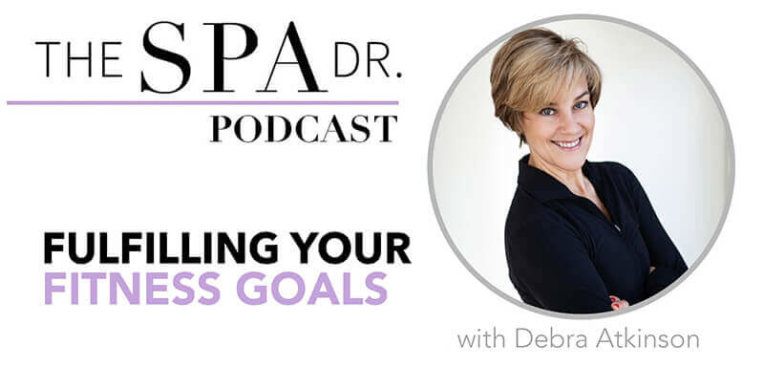
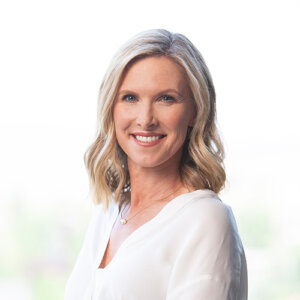
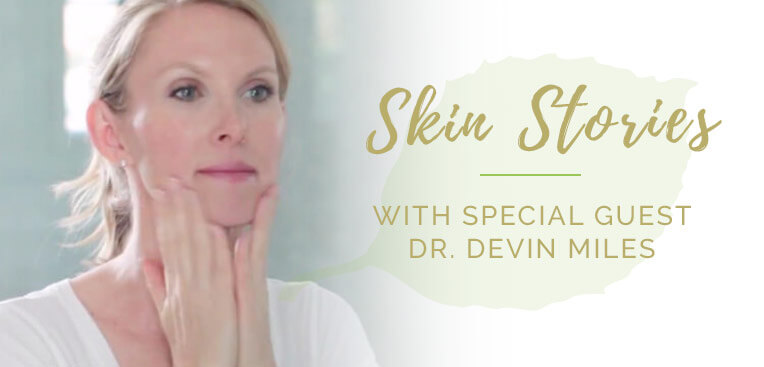
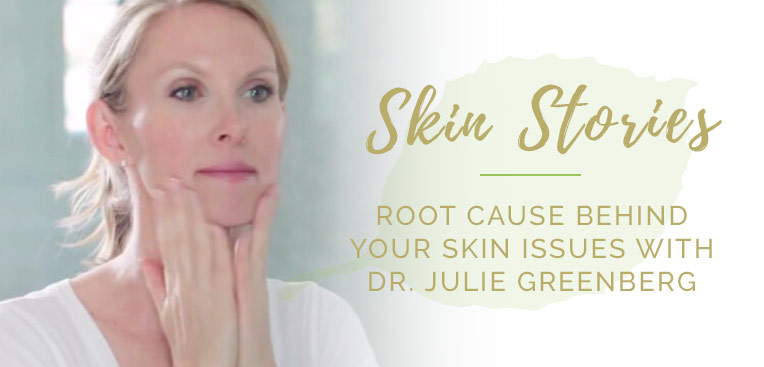

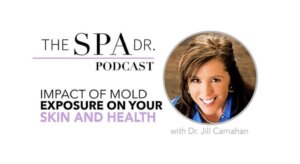
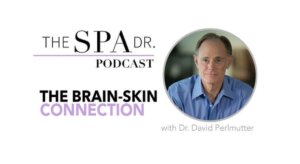

Reader Interactions